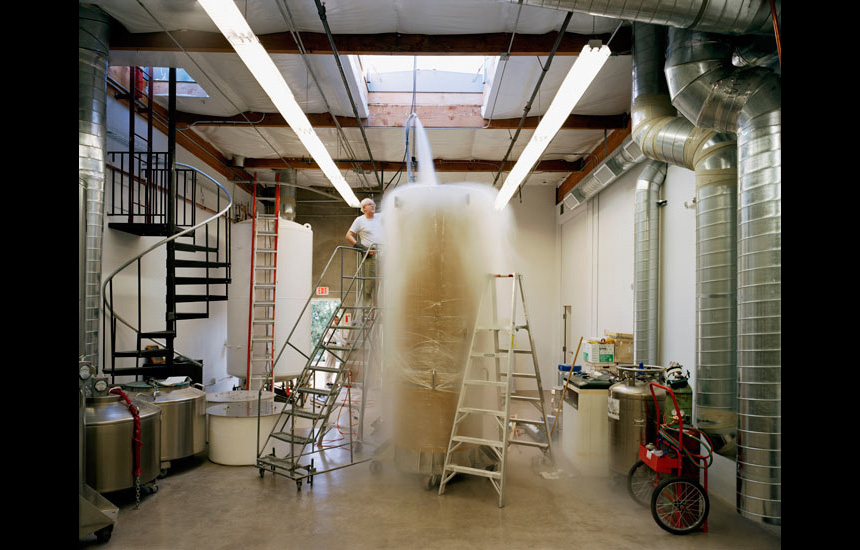In Pictures: Frozen in Time
Photographer Murray Ballard catalogues the world of cryonics, which involves freezing a dead person’s body in liquid nitrogen until technology has advanced enough to bring them back to life.
Photographer Murray Ballard’s Best Shot
‘This is a cryonics lab. Four whole bodies can be frozen in each vat. But just getting your head done is cheaper’
Kate Abbott, The Guardian (August 15, 2011)
One day, in the future, the people who chose to have either their heads or their whole bodies cryogenically preserved will look back at these photos as the in-between-time in their lives.
So the theory of cryopreservation and eventual reanimation suggests.
I’m still not sold on the idea that cryopreservation will work but I am fascinated by the people who opt for the procedure.
I am also curious what happens when people who died a century (or more) ago find themselves in a world which has moved on without them. That specific problem fascinates me the most.
But we are not here today to discuss the practicalities of cryopreservation. No no. We’re here to discuss photography. It just so happens that a new photography exhibition by Murray Ballard has opened in Bradford, England and it captures how the cryopreservation process appears to the non-cryogenically preserved individual.
Ballard’s images, which can be seen in the articles at the top, show how industrially heavy the cryopreservation process becomes. I was also struck by how low-tech the entire process looks in these photographs.
Robert Ettinger, the man considered to be the ‘father of modern cryogenics,’ recently died and you can read his obituary here. His body was cryopreserved after he died.
And here is a little 1990’s era cryopreservation humor….
